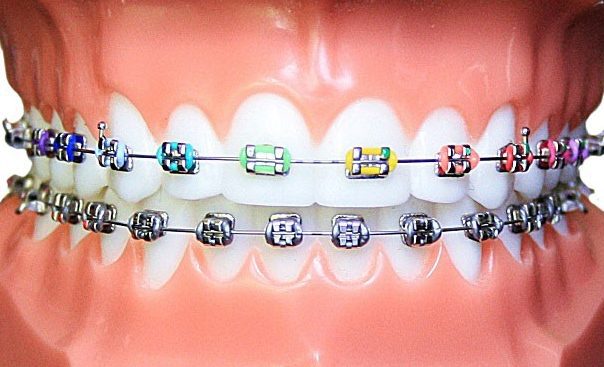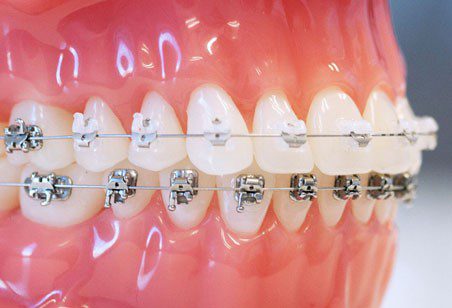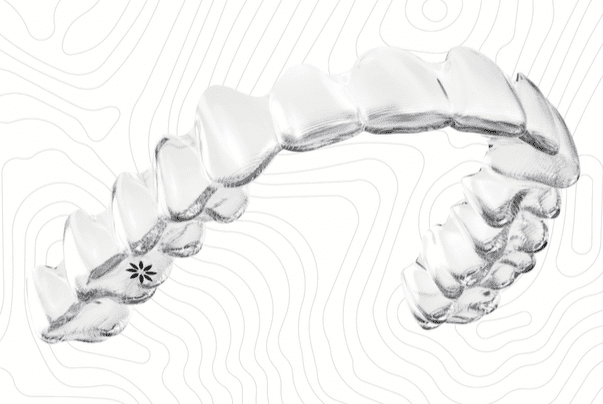Types of orthodontic braces
Fixed ligature braces


Fixed ligature braces are the most classic solution. It consists of brackets, an appropriate orthodontic arch and ligatures (called rubber bands by patients). The brackets are glued to the teeth in the right position, then the arch is placed in them and the ligature is attached to the bracket. The patient can choose the colour of ligatures which allows him to colour his smile depending on the occasion, mood or time of year. Follow-up visits take place every 4-6 weeks. Standard fixed ligature braces are available in the following versions:
- metal
- aesthetic (transparent, white brackets)
- in aesthetic white gold (ICONIX), which is less visible than standard metal braces
Self-ligaturing braces


Self-ligaturing braces consist of brackets and archwires, but the brackets themselves contain the element that holds the arch. They have built-in flaps which hold the arch. Thanks to their design, these braces generate less pressure on the teeth, are gentle to soft tissues and easier to maintain hygiene, ensuring high effectiveness of treatment.
Follow-up visits take place every 6-8 weeks.
You can choose between metal brackets and aesthetic ceramic brackets.
Invisalign


Invisalign (modern braces) is a system of transparent caps (aligners) for straightening teeth designed and adjusted individually for each patient. Thanks to the computer-based treatment planning, with the Invisalign system the patient can already know the final effect and the treatment time before the start of the treatment.
Invisalign is applicable for various malocclusions in patients of all ages and has many advantages.
The patient receives a set of specially made trays which should be worn and replaced every day – on average every 1-2 weeks. The recommended daily wearing time is 22 hours.
Follow-up visits to monitor the progress of treatment and to dispense new trays take place every 6-8 weeks.
Clear Aligner


Clear Aligner, similarly to Invisalign, is a solution based on removable transparent overlays. After accepting the treatment plan the patient receives a set of 3 onlays of different thickness (soft, medium and hard). The treatment time is shorter than in case of traditional solutions. Each tray is worn 24 hours a day and only removed for eating during 7-10 days. After 3 weeks the doctor takes another set of impressions and another set of onlays is made. This procedure is repeated until the completion of the active treatment period.
What distinguishes the Clear Aligner system from Invisalign is a narrower scope of action, Clear Aligners are not suitable for treating every bite problem.